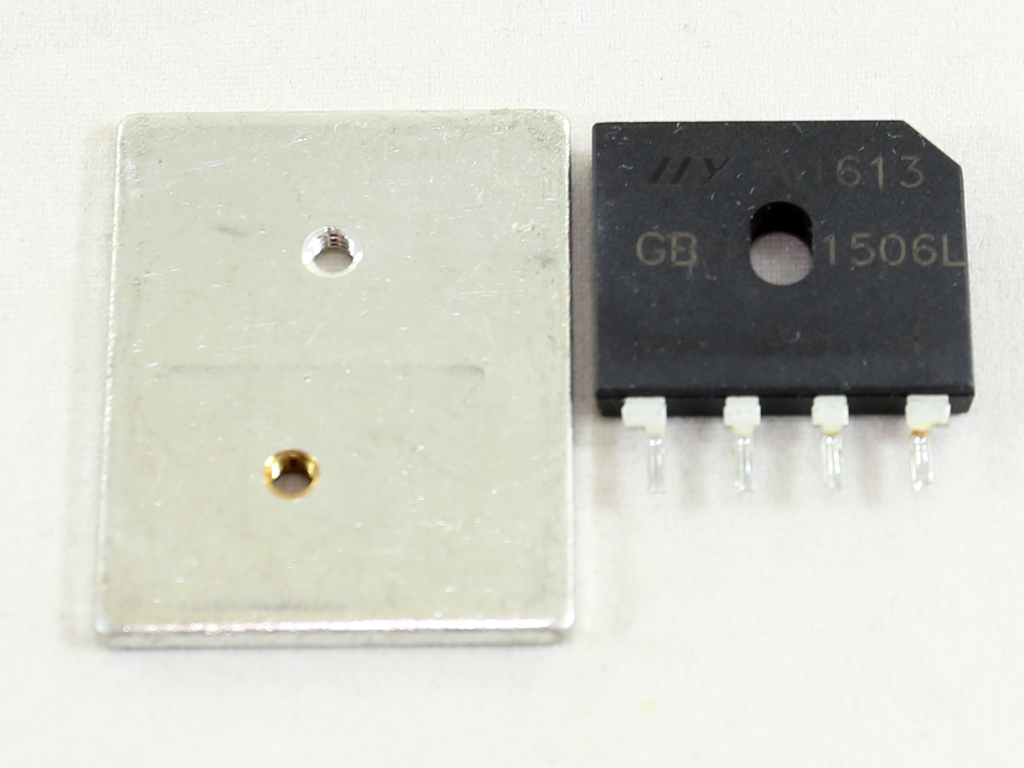SilverStone SFX Series SX700-LPT PSU Review
SilverStone released a powerful new SFX-L unit that boasts 700W capacity, Platinum-rated efficiency, fully modular cabling, and a single +12V rail. The SX700-LPT is based on a Sirfa platform and promises quiet operation thanks to its 120mm fan.
Why you can trust Tom's Hardware
A Look Inside And Component Analysis
Parts Description
Before proceeding with this page, we strongly encourage you to a look at our PSUs 101 article, which provides valuable information about PSUs and their operation, allowing you to better understand the components we're about to discuss. Our main tools for disassembling PSUs are a Thermaltronics soldering and rework station, and a Hakko FR-300 desoldering gun.
| General Data | |
|---|---|
| Manufacturer (OEM) | Sirfa / High Power |
| Primary Side | |
| Transient Filter | 4x Y caps, 2x X caps, 2x CM chokes, 1x MOV, 1x CMD02X |
| Inrush Protection | - |
| Bridge Rectifier | GBU1506 (600V, 15A @ 100°C) |
| APFC MOSFETs | 2x Sigmachip SGF110N60W3 (630V, 16A @ 100°C, 0.11Ω) |
| APFC Boost Diode | Infineon IDH08G65C5 (650V, 8A @ 145°C) |
| Hold-up Cap | Rubycon (420V, 390uF, 3000h @ 85°C, USG) |
| Main Switchers | 2x Infineon IPA50R140CP (550V, 15A @ 100°C, 0.14Ω) Driver IC: Silicon Labs Si8233BD |
| APFC Controller | Infineon ICE3PCS01 |
| Switching Controller | Infineon ICE2HS01G |
| Topology | Primary side: Half-Bridge & LLC Resonant Converter Secondary side: Synchronous Rectification & DC-DC converters |
| Secondary Side | |
| +12V MOSFETs | 6x Toshiba TPHR85 04PL (SOP Advance Series, 40V, 150A @ 25C, 0.85 mΩ) |
| 5V & 3.3V | DC-DC Converters: 4x Infineon BSC0902NS (30V, 67A @ 100°C, 2.6 mΩ) PWM Controller:ANPEC APW7159 |
| Filtering Capacitors | Electrolytics: Nippon Chemi-Con (105°C, KY, KZE) Polymers: Nippon Chemi-Con |
| Supervisor IC | SITI PS223 (OVP, UVP, OCP, SCP, OTP ) |
| Fan Model | PowerYear PY-12015H12S (120mm, 12V, 0.22A, 1900 RPM, Sleeve Bearing) |
| 5VSB Circuit | |
| Rectifiers | 2x Infineon IPD060N03L G (30V, 50A @ 100°C, 6 mΩ) |
| Standby PWM Controller | Sanken STR-A6069H |
| -12V Circuit | |
| Regulator | KEC KIA7912PI |
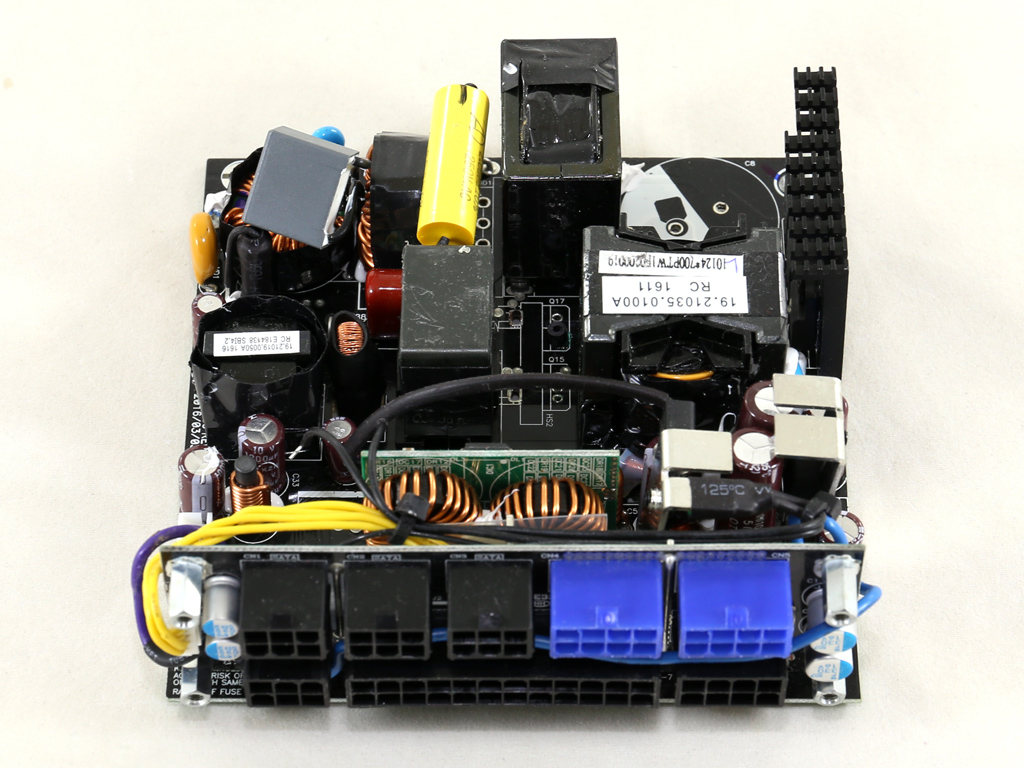

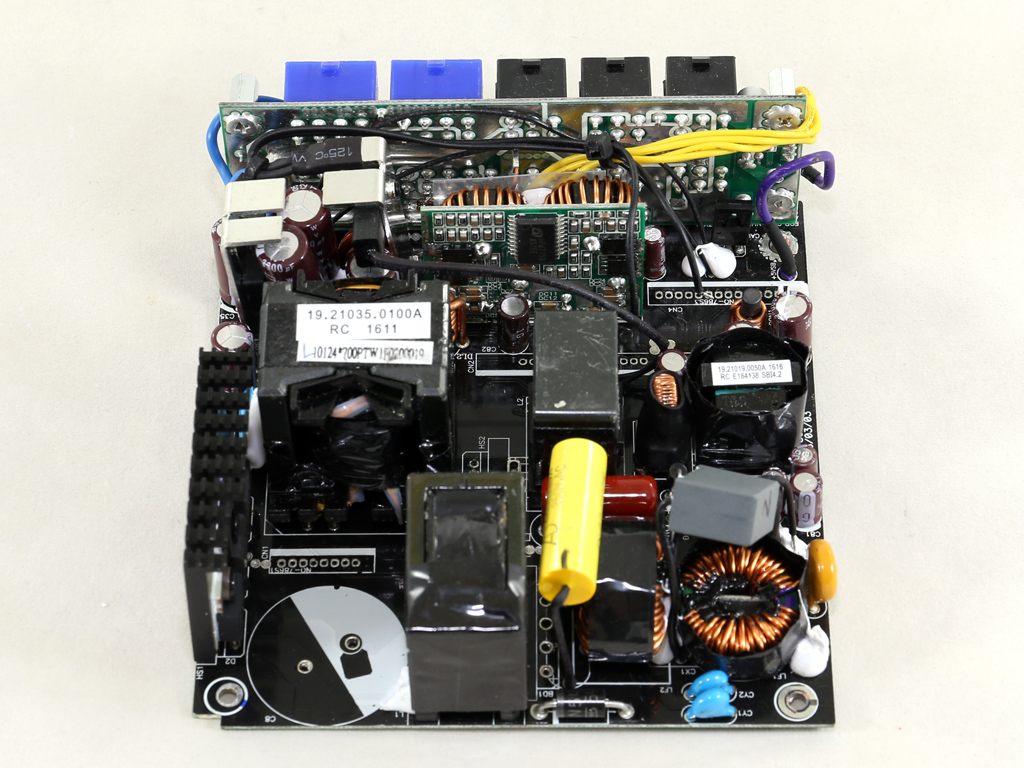
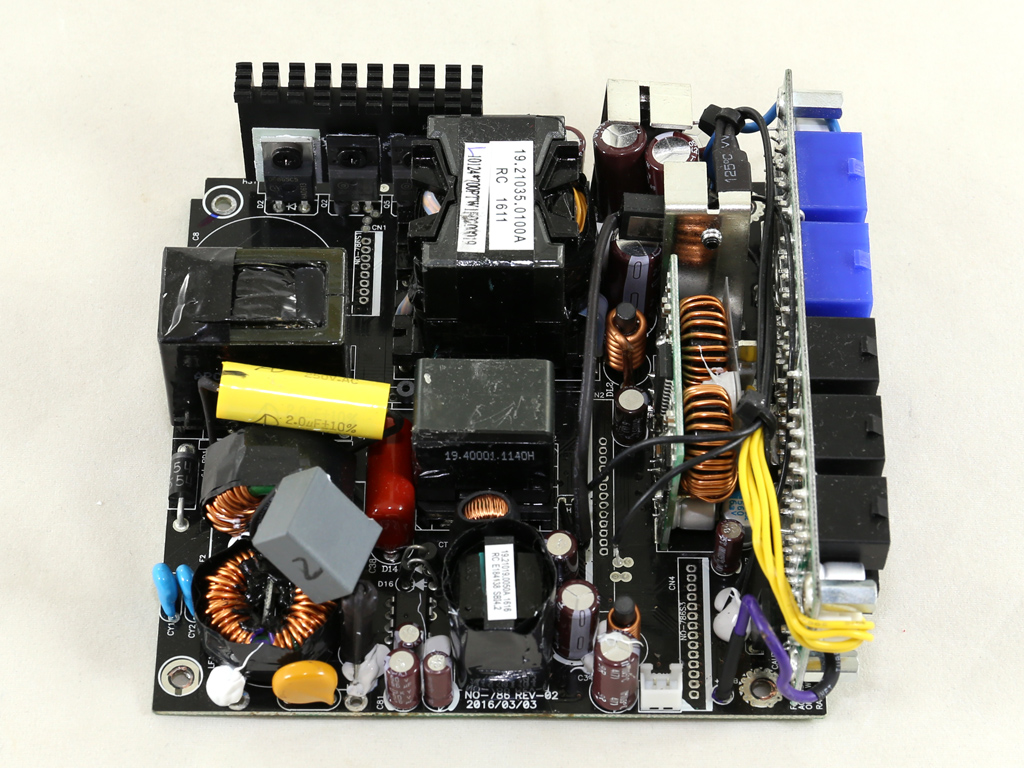
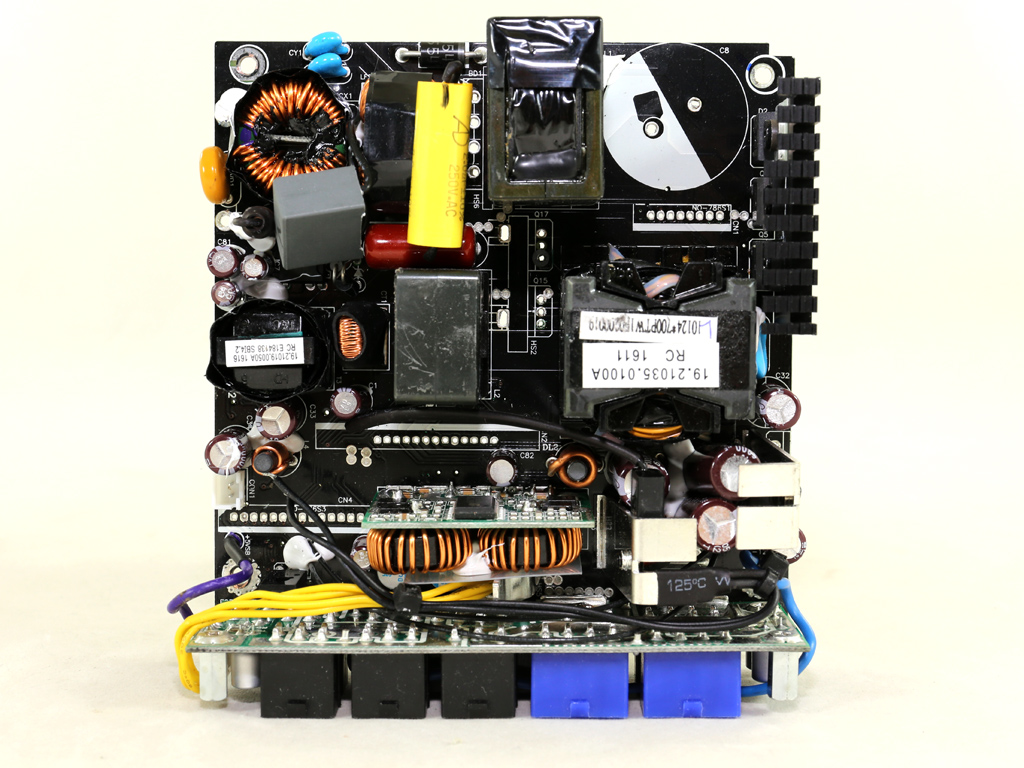
The platform is provided by Sirfa/High Power, and the small PCB's design is modern. It utilizes a half-bridge topology and resonant converter on the primary side. On the secondary side, a number of FETs regulate the +12V rail while the minor rails are handled by a couple of DC-DC converters. Sirfa uses high-quality filtering caps. The only weakness we find is the 85°C bulk cap. It comes from a good manufacturer, however we only want to see 105°C caps in the APFC converter.
Since the main PCB is overpopulated and the view to most components is blocked, we had to desolder a lot of components to identify them. This isn't easy without damaging the PCB and the corresponding parts. Fortunately, a combination of proper tools and the experience to use them helps a ton.
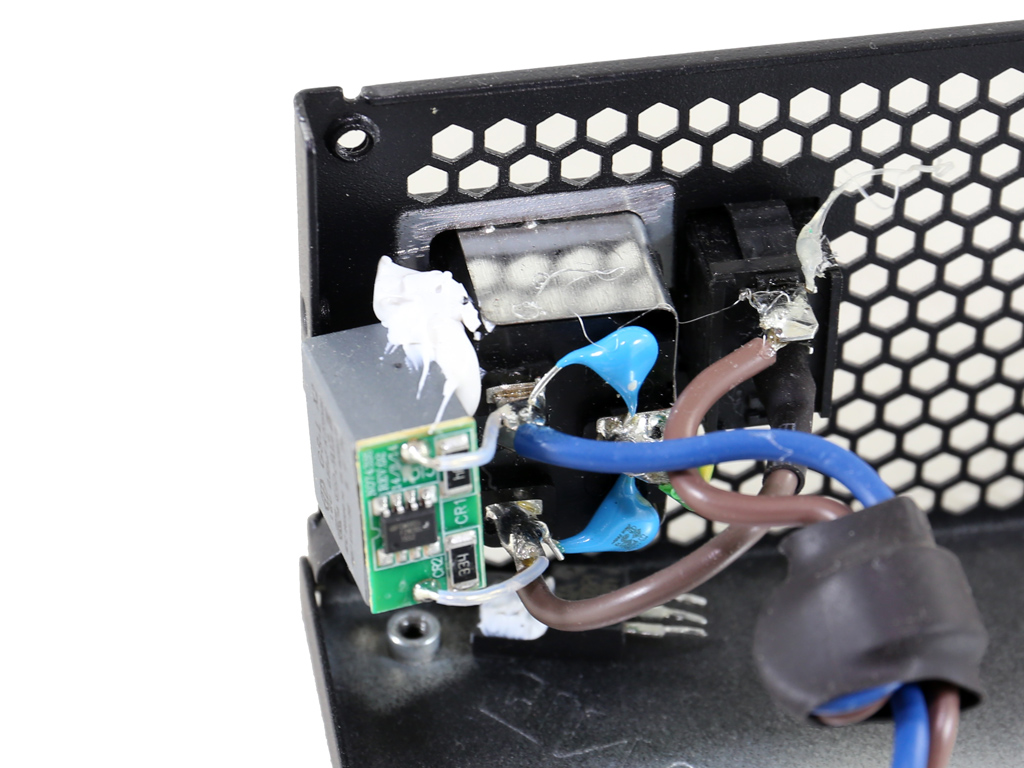
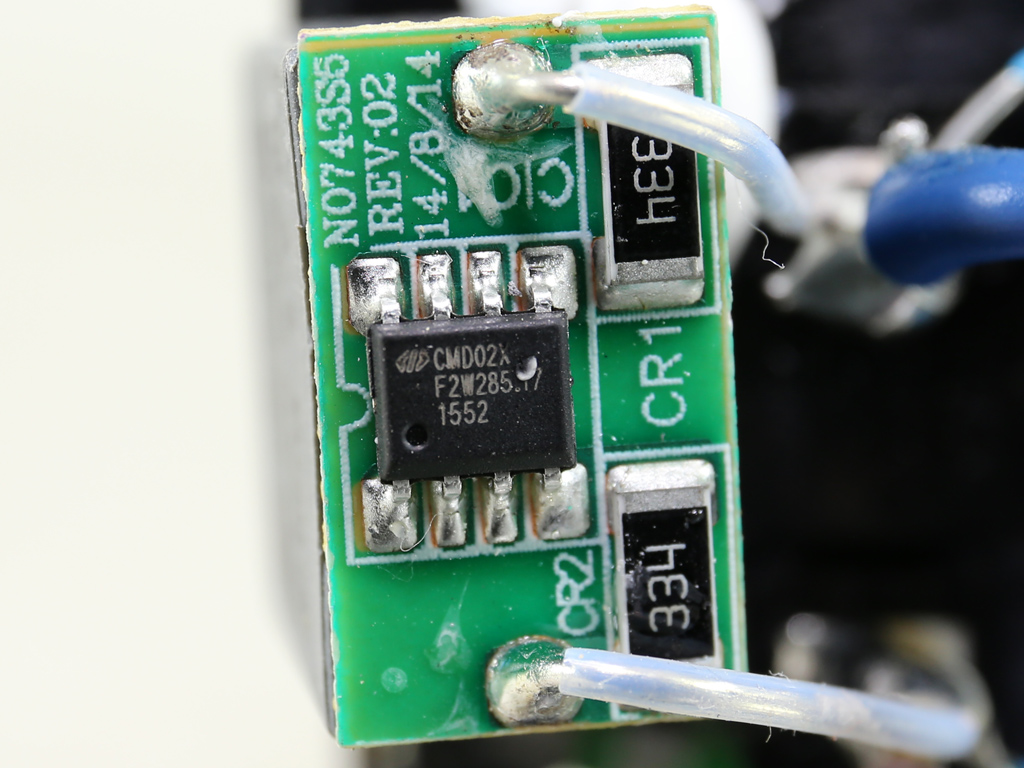
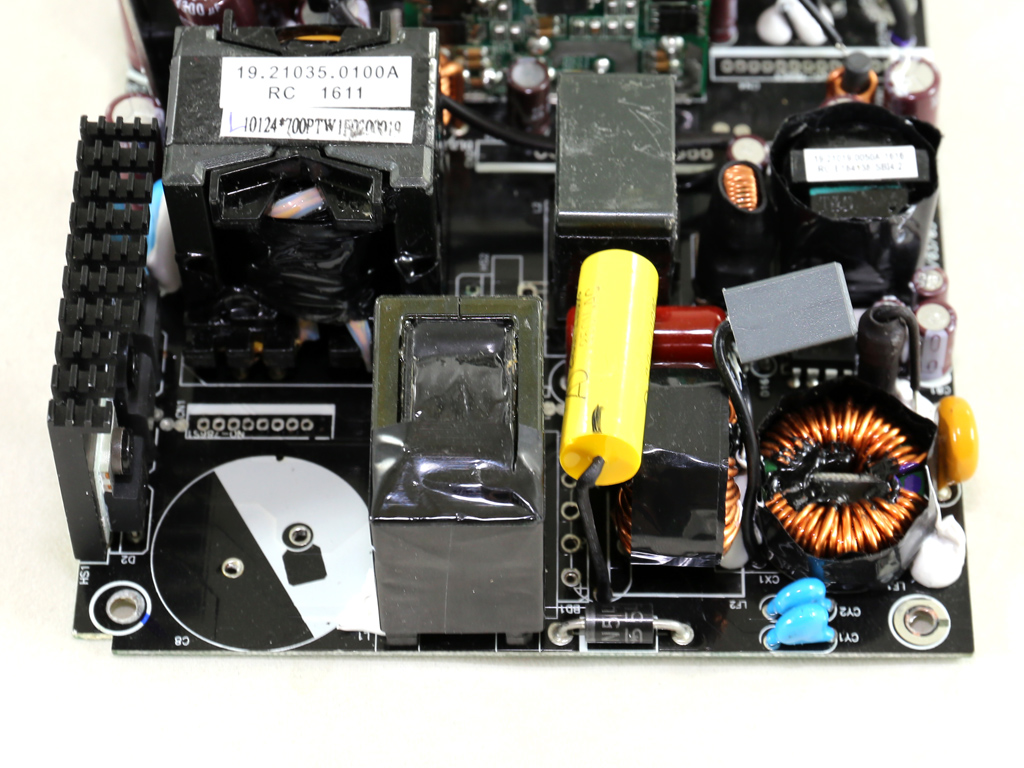
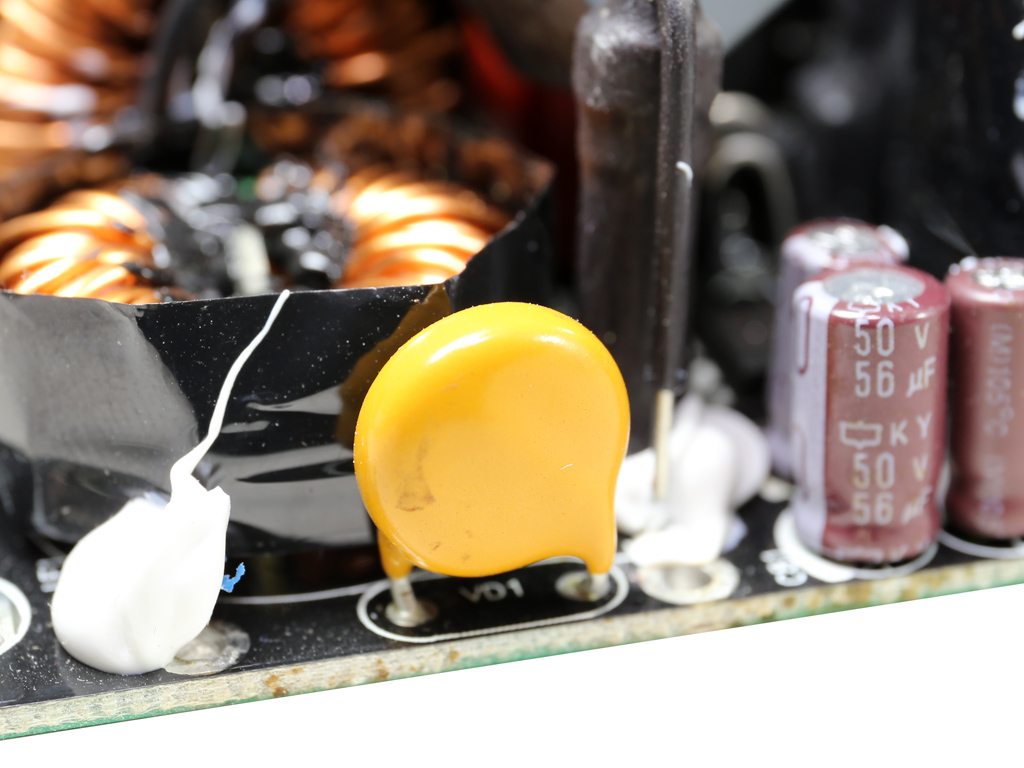
The first part of the EMI filter is on the AC receptacle; it consists of two Y caps and a single X one. It continues on the main PCB with two more Y caps, an additional X cap, two CM chokes, and an MOV (Metal Oxide Varistor). Although the EMI filter is complete, Sirfa doesn't install an NTC thermistor or bypass relay, so we expect this platform to have very high inrush currents. In our opinion, that's a design flaw.
The single bridge rectifier is bolted onto a small dedicated heat sink. Its model number is GBU1506 and it can handle up to 15A of current.

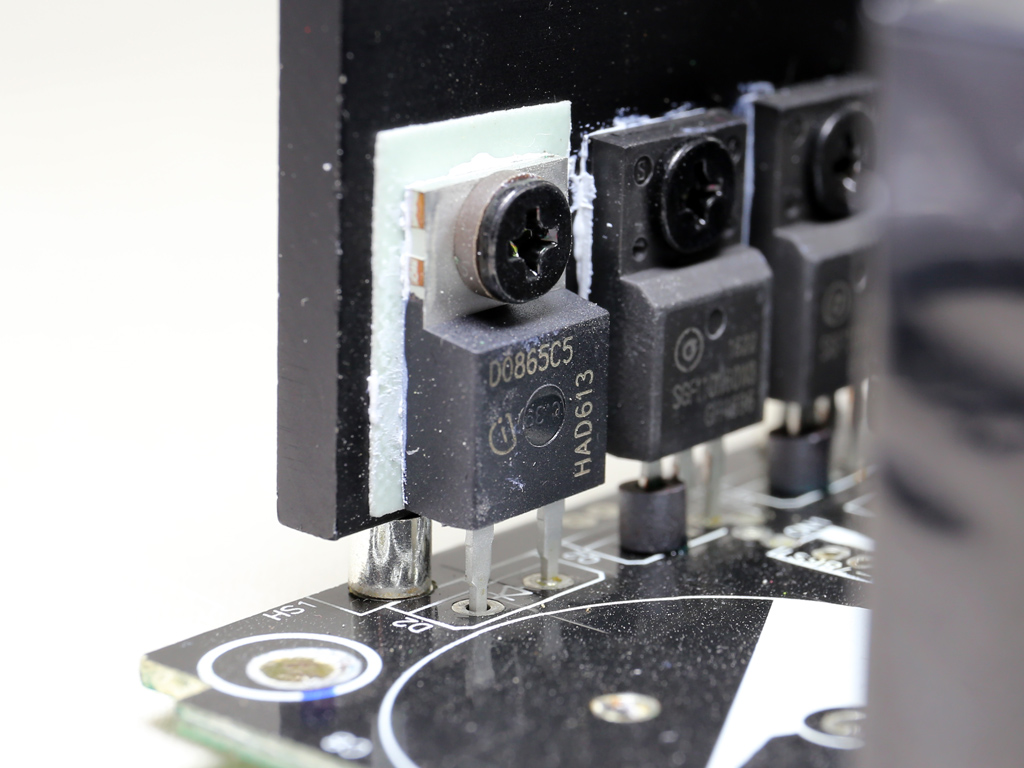


The APFC converter uses two Sigmachip SGF110N60W3 FETs and a single Infineon IDH08G65C5 boost diode. The bulk cap is provided by Rubycon. Disappointingly, it suffers low capacity and a mere 85°C rating. Sirfa should use a 105°C cap with much higher capacity, enabling a decent hold-up time. Then again, the higher the bulk cap's capacity, the higher its energy losses due to increased ESR (Equivalent Series Resistance).

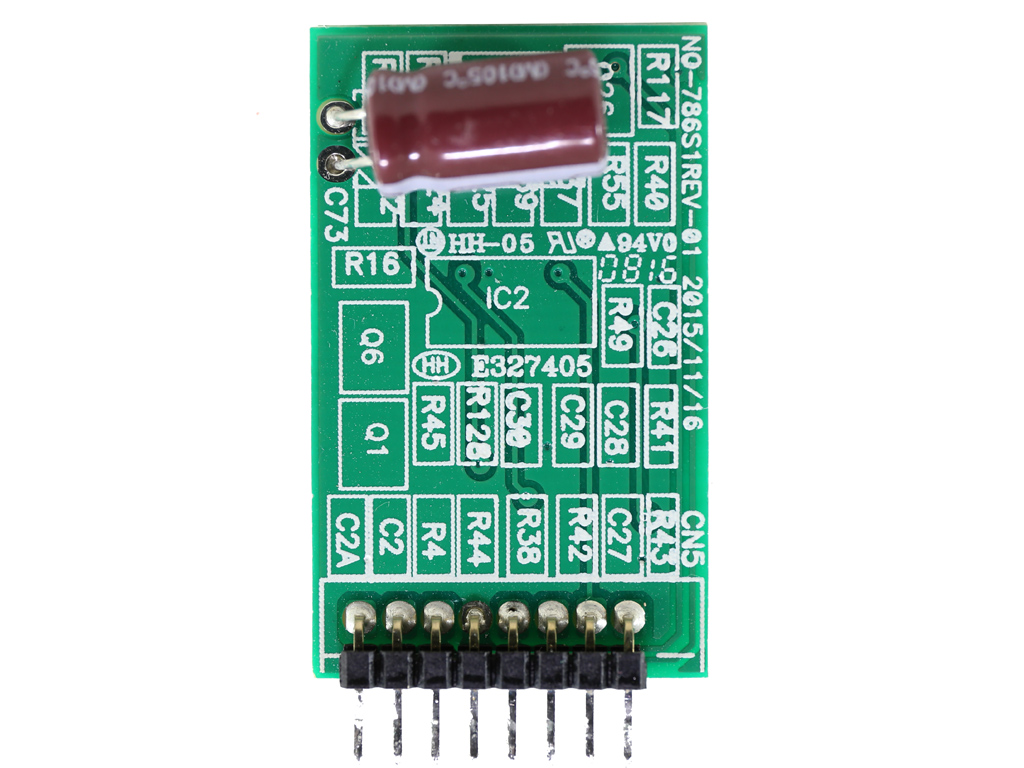
The PFC controller is an Infineon ICE3PCS01 IC, which is installed onto a small vertical board.
Get Tom's Hardware's best news and in-depth reviews, straight to your inbox.
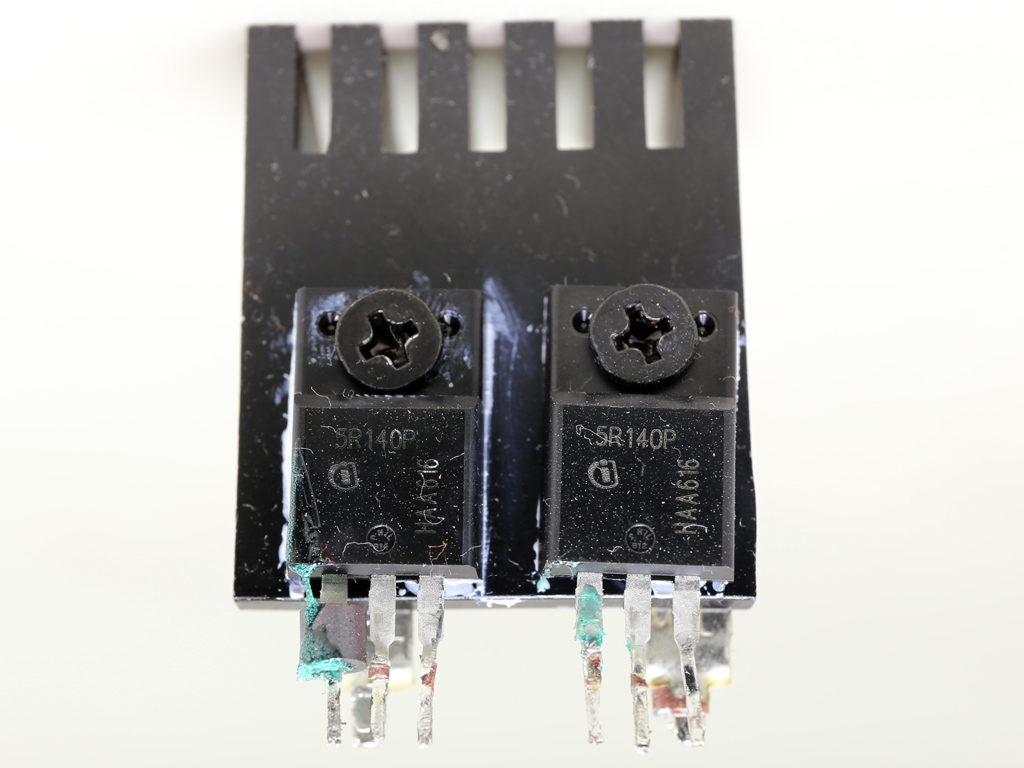

The primary switches are a couple of Infineon IPA50R140CP FETs, and the driver IC that controls them is a Silicon Labs Si8233BD. If you look closely at the first photo above, you'll see a crack on the left FET. This happened during our OPP evaluation test when the FET exploded under 1040W of load. Sirfa obviously didn't set the OPP feature's triggering point correctly, resulting in the PSU's destruction. Finally, the main FETs are installed into a half-bridge topology that looks to be the second best option for high-efficiency PSUs behind full-bridge topologies.
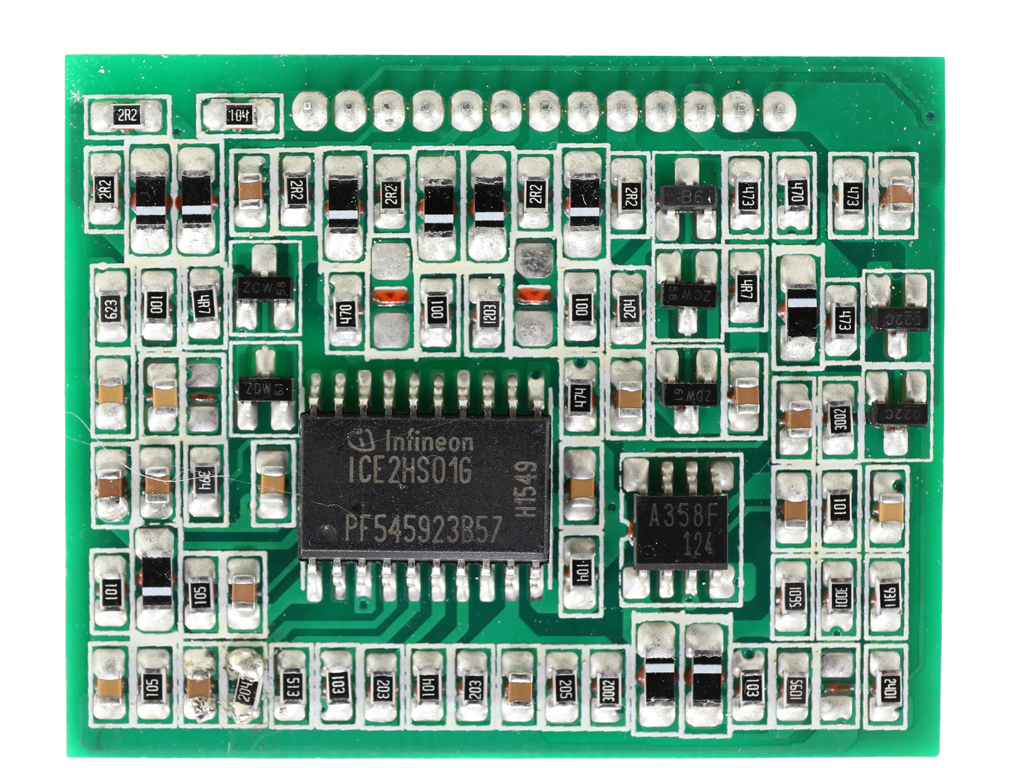
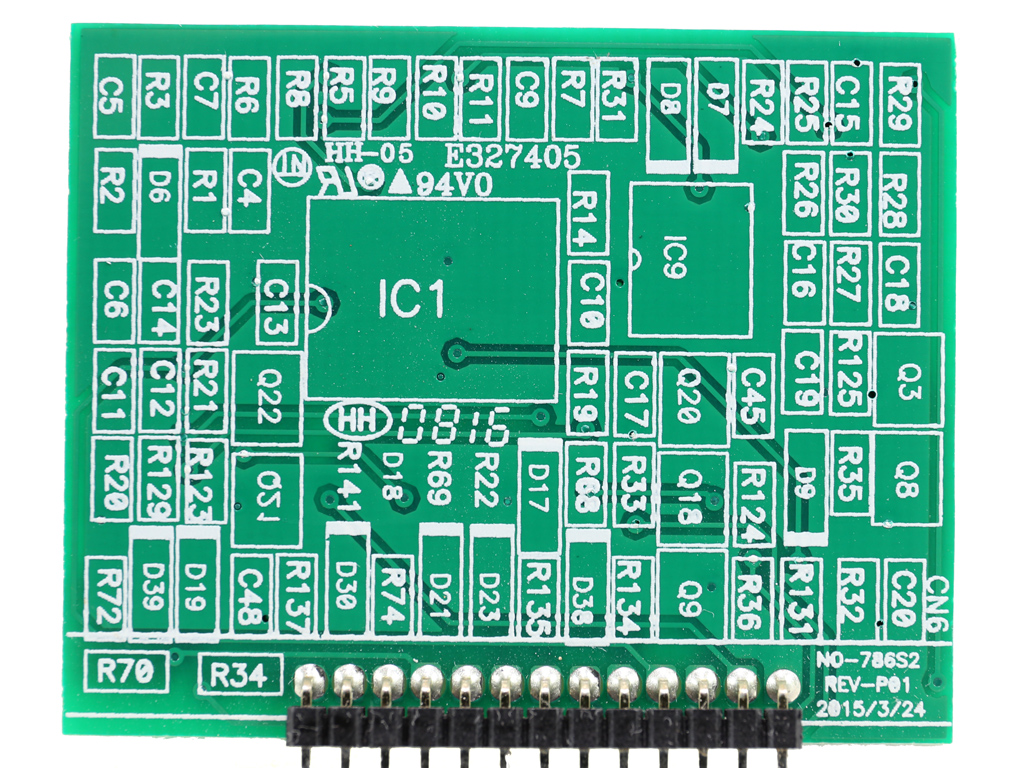
The resonant controller is an Infineon ICE2HS01G.
On the secondary side, six Toshiba TPHR85 04PL FETs regulate the +12V rail. Those FETs are installed on the solder side of the main PCB. In addition to the two small heat sinks right above them, they are also cooled by the PSU's chassis.
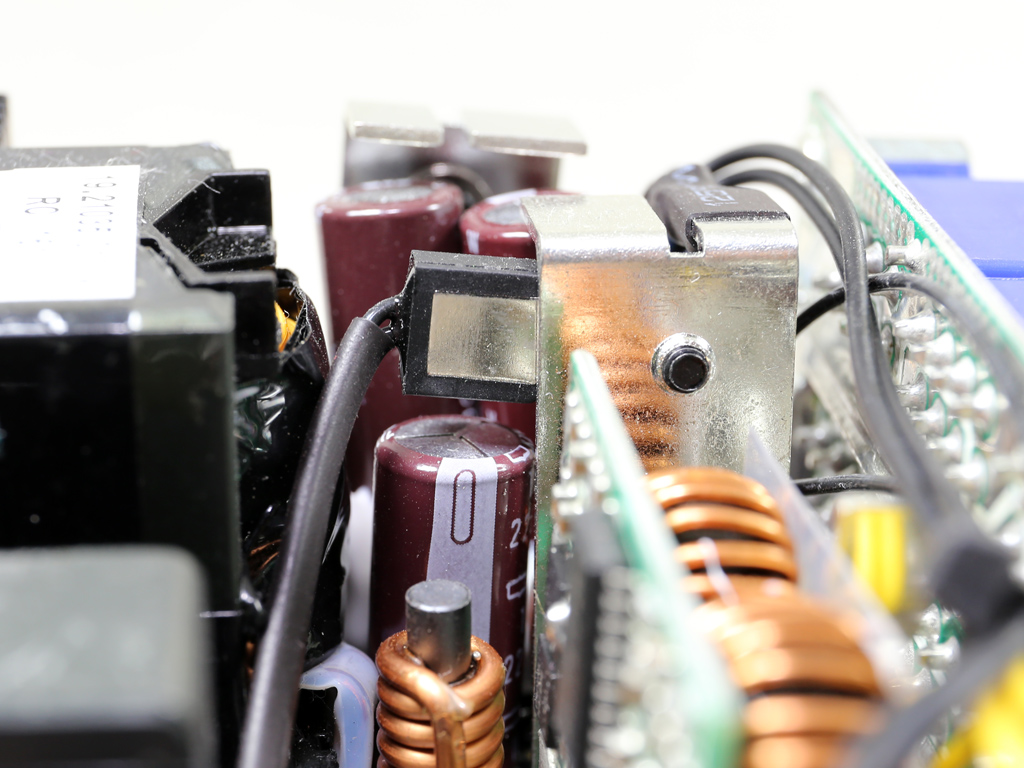
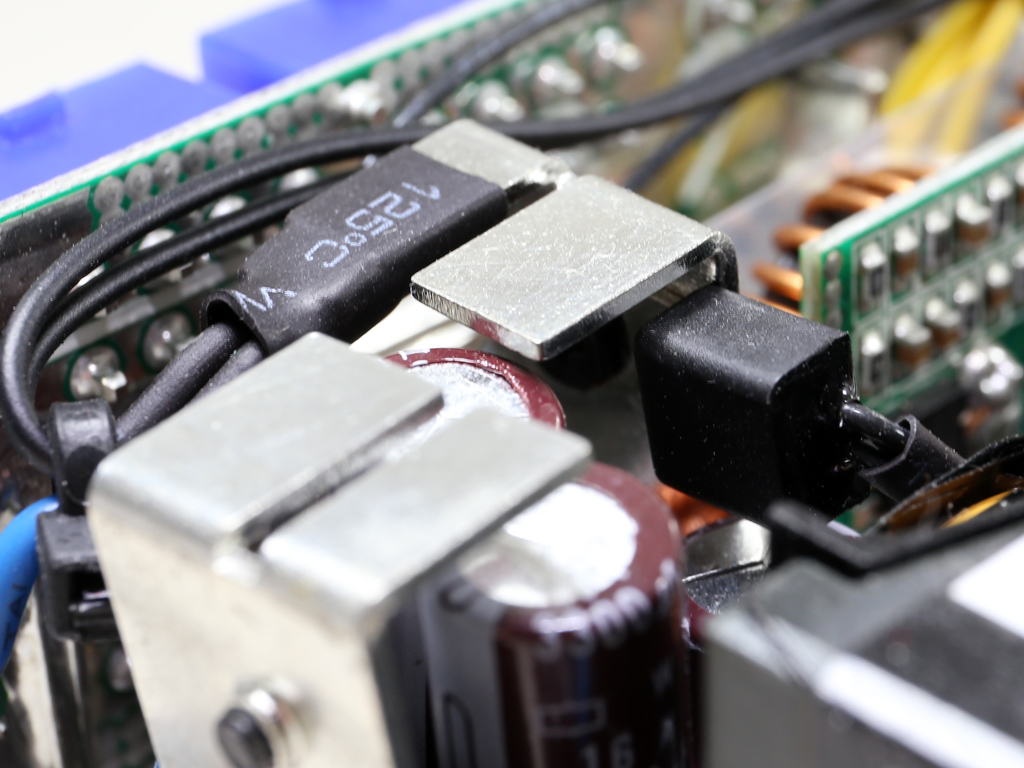
The sinks installed on top of the +12V FETs feature two thermistors. One is used by the fan control circuit and the other provides temperature data to the supervisor IC for over-temperature protection.
Both DC-DC converters are installed on the same PCB. The common PWM controller is an ANPEC APW7159, and in total four Infineon BSC0902NS FETs regulate the minor rails.


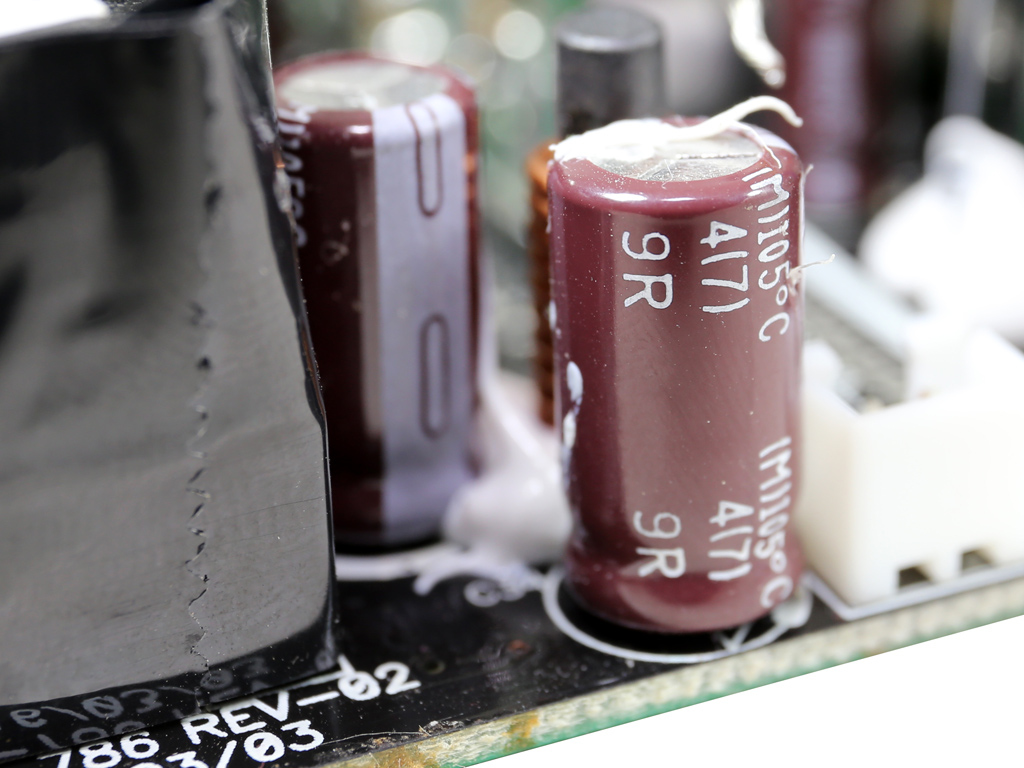
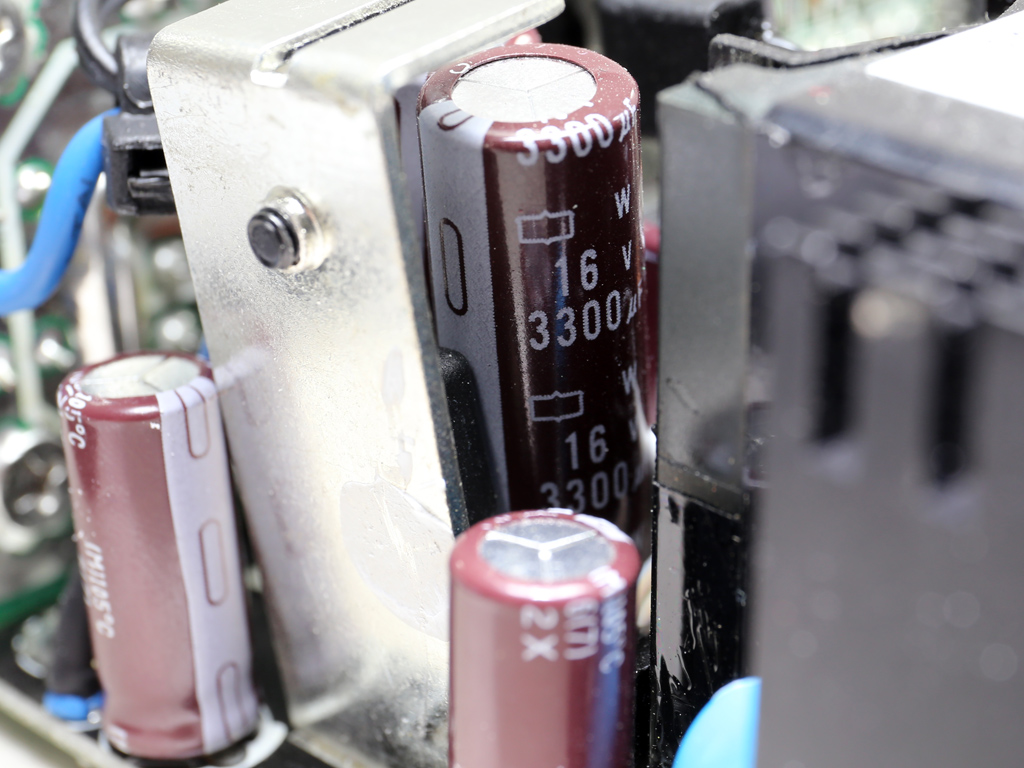
The filtering caps (both electrolytic and polymer) are provided by Chemi-Con. The cap choice is quite good for a PSU in this price category.

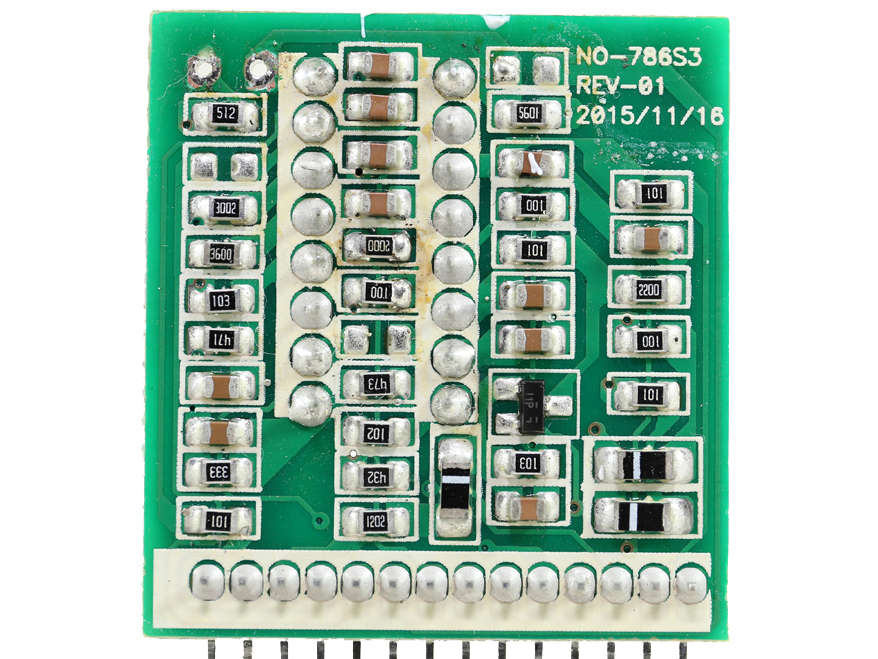
The supervisor IC is a SITI PS223. It's one of the most advanced protection ICs available, and it supports all necessary capabilities including OTP (over-temperature protection).
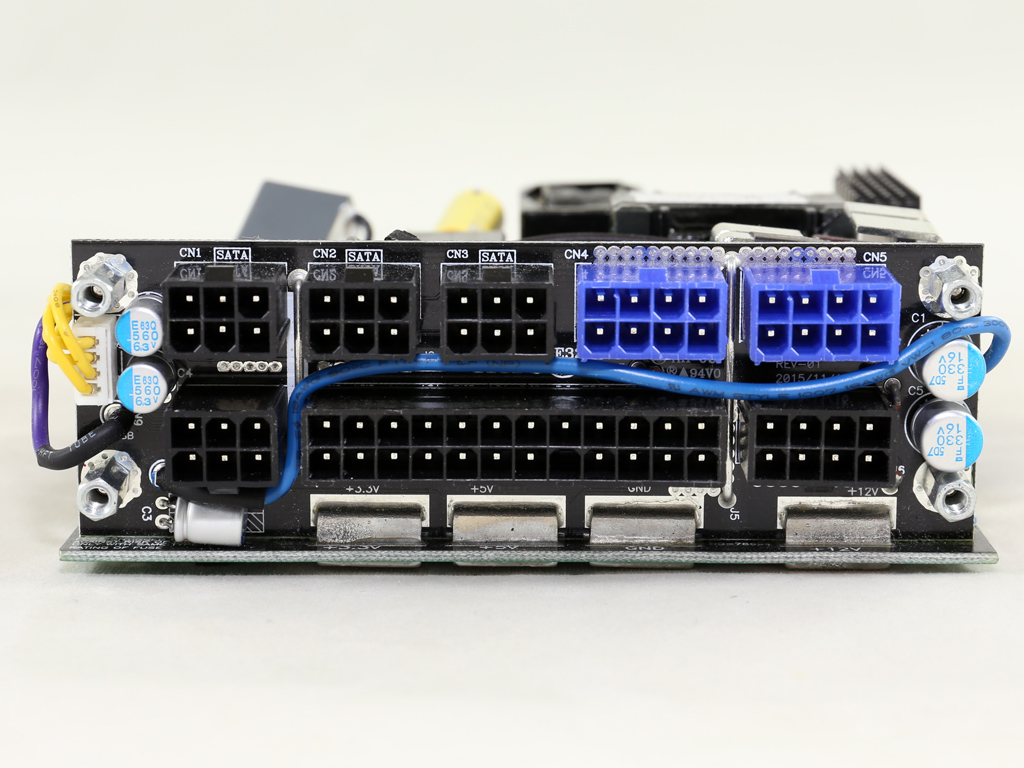

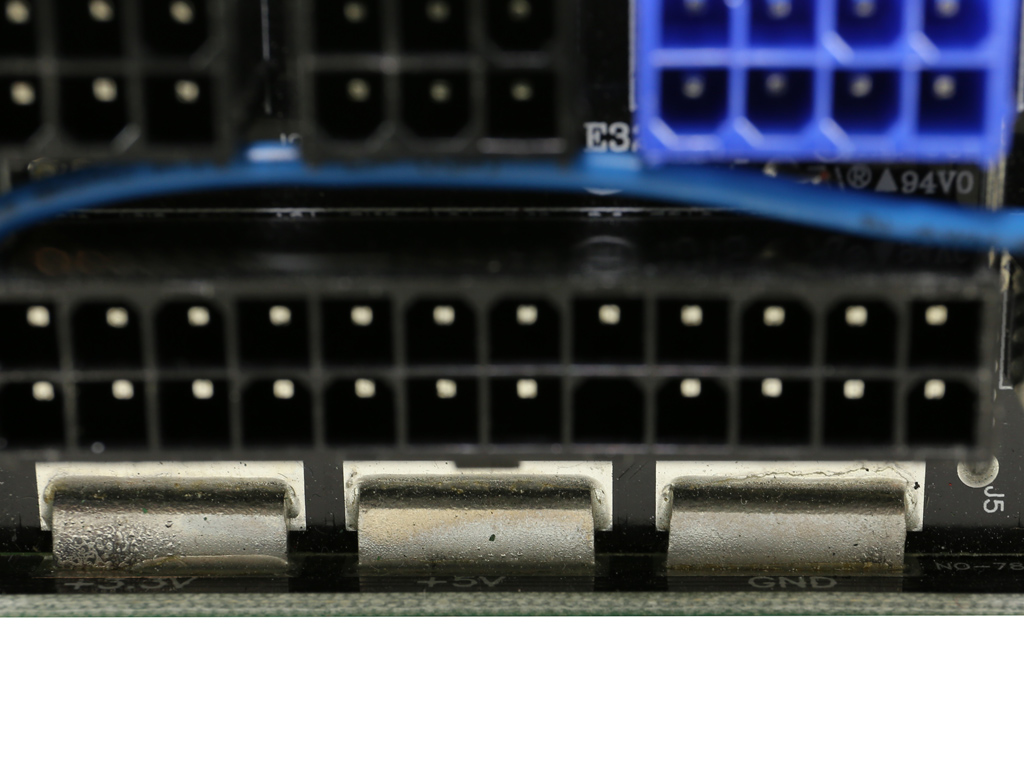
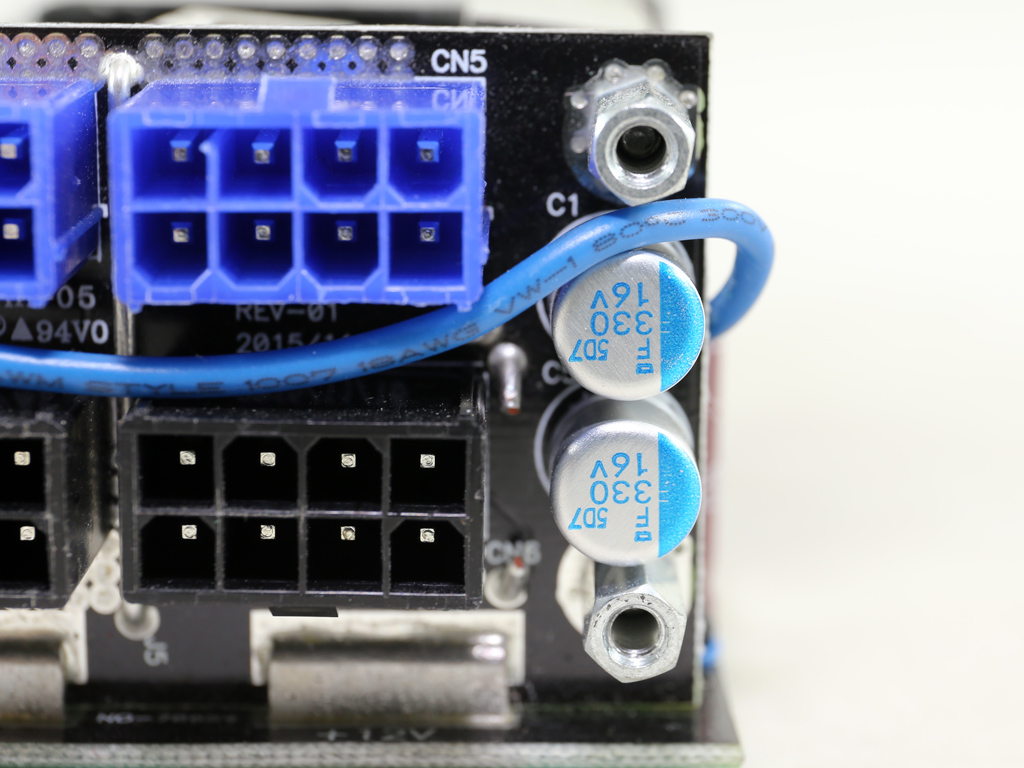
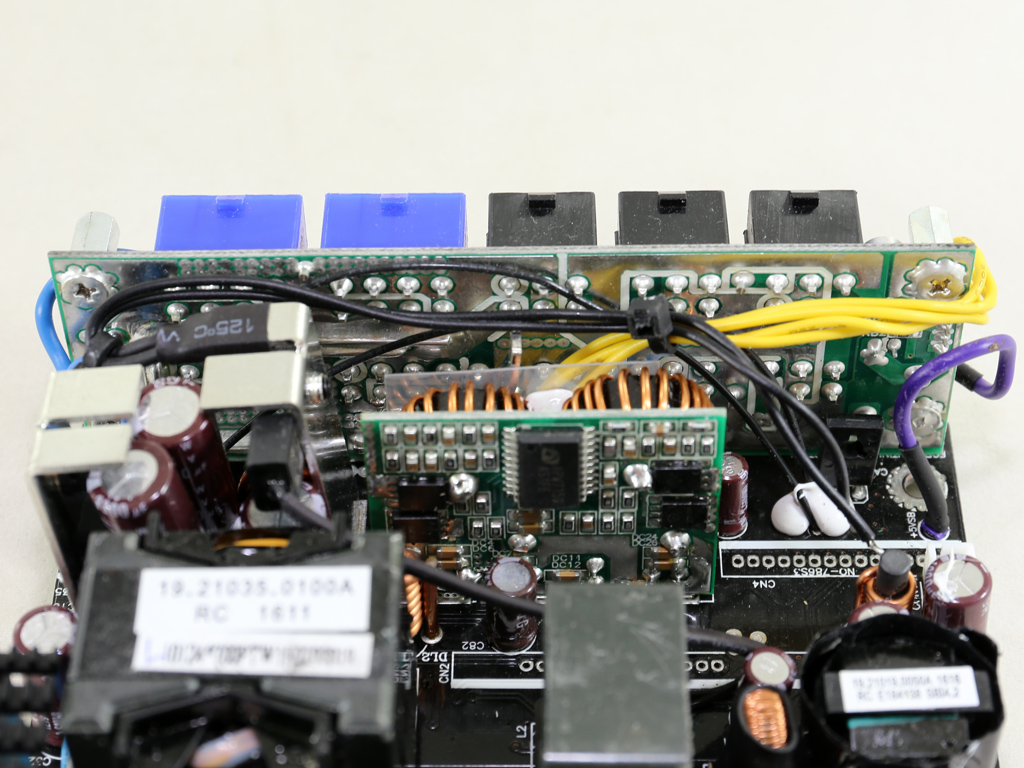
On the front side of the modular PCB, a number of Chemi-Con polymer caps provide an extra layer of ripple filtering. In addition to increased heat tolerance, polymer caps also have much lower ESR compared to electrolytic ones.

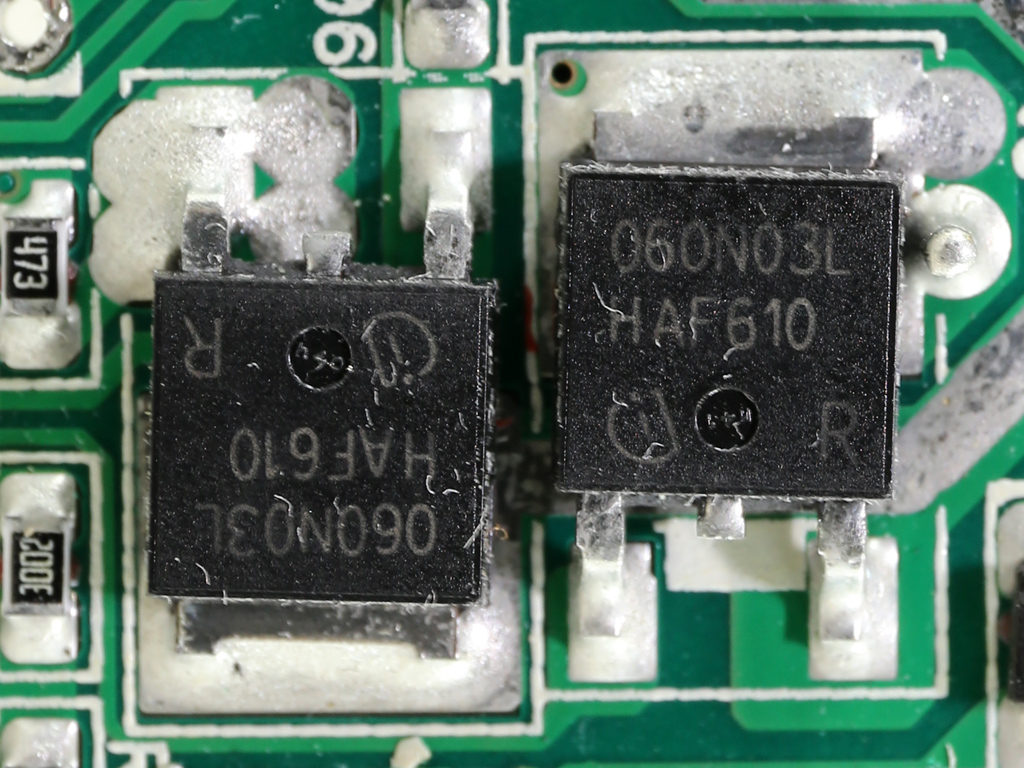
The standby PWM controller is a Sanken STR-A6069H, which offers high efficiency levels at 5VSB. On the solder side of the PCB, we spot two Infineon IPD060N03L G FETs. One of them rectifies the 5VSB rail, while the other one is most likely used to switch the 5V output to the 5VSB rail when the PSU is in operation. Lastly, a KEC KIA7912PI handles generation of the -12V rail.
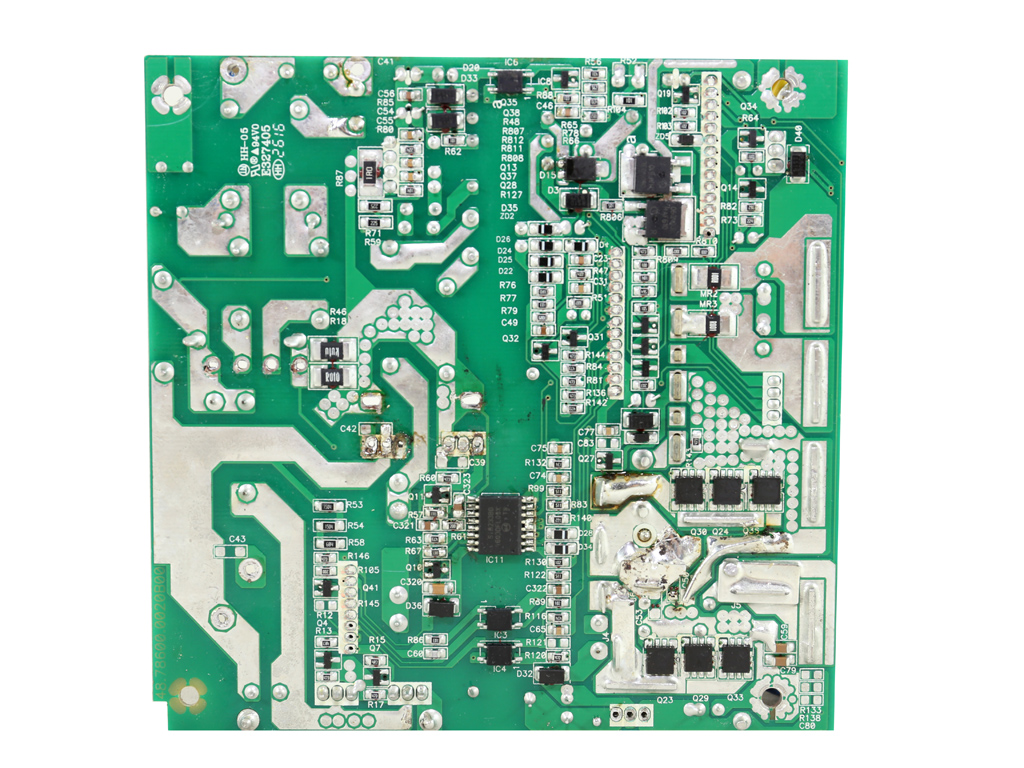
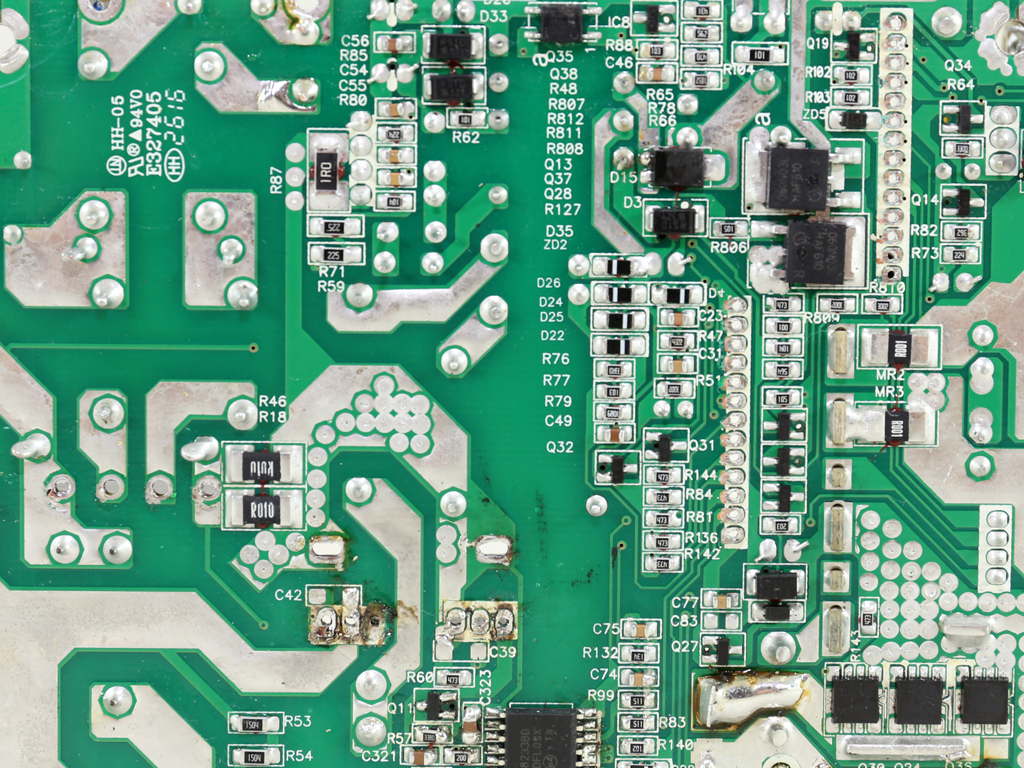
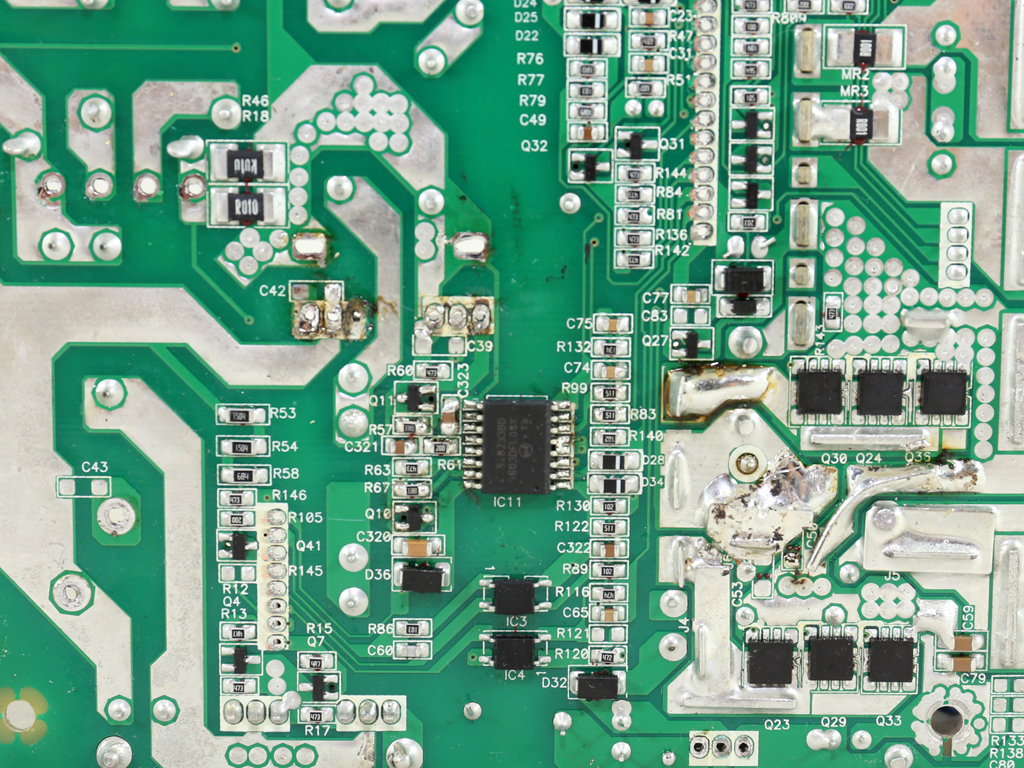
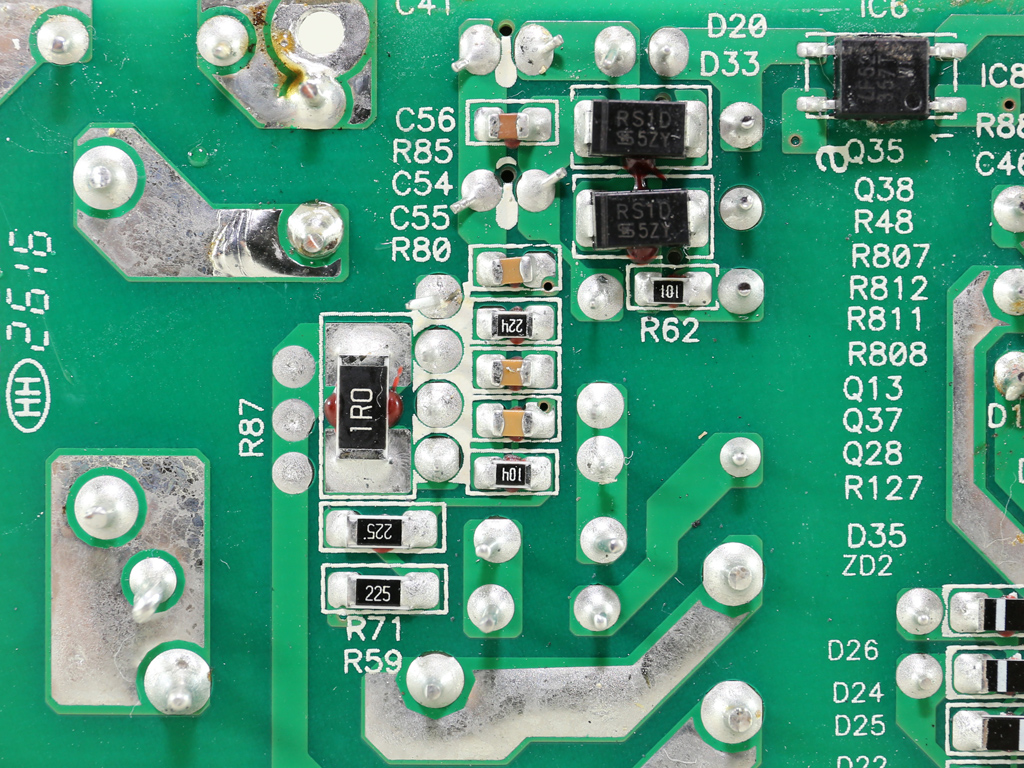
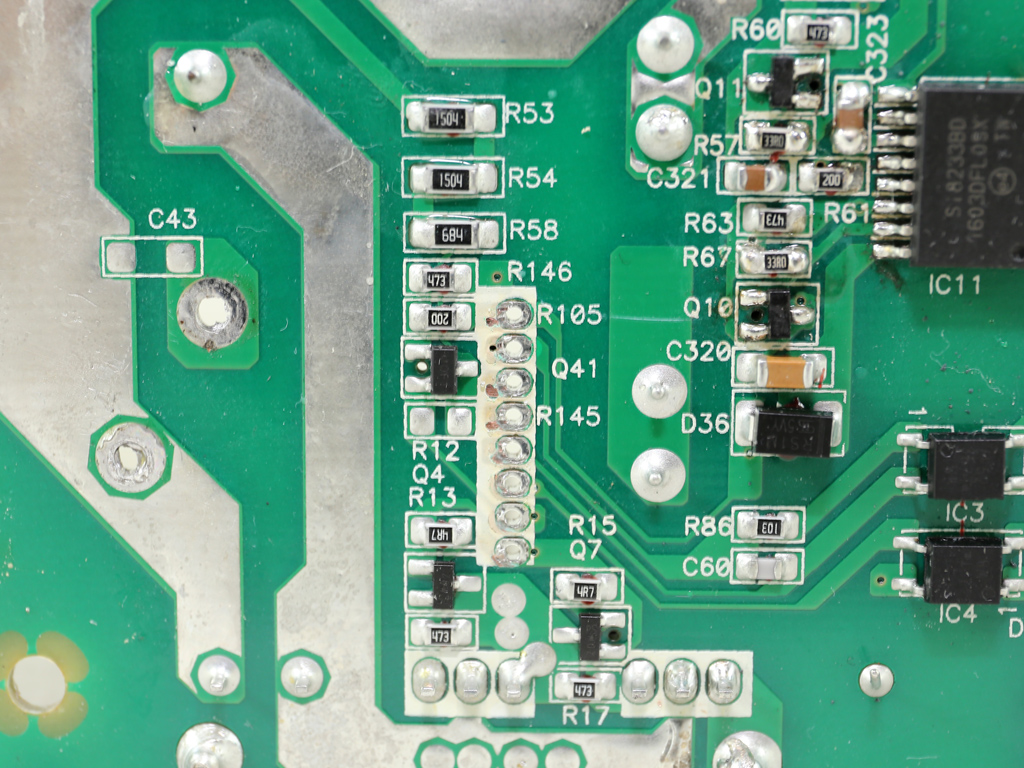

The SX700-LPT's soldering quality is decent, but surely not top-notch. We've seen better from Sirfa.
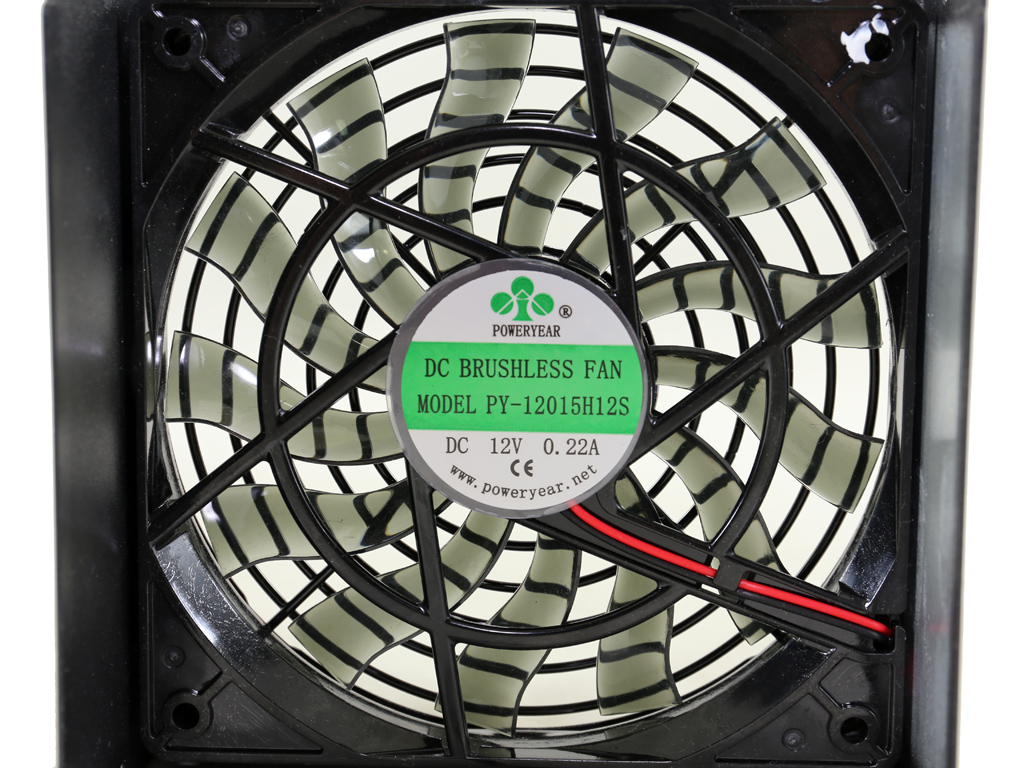
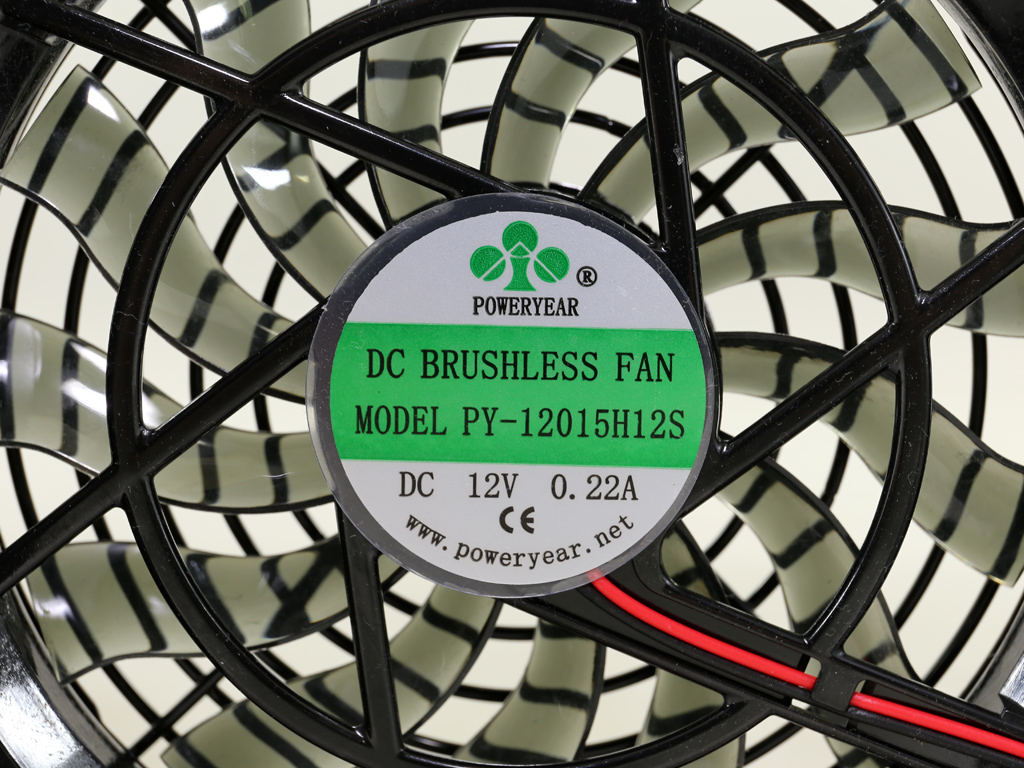
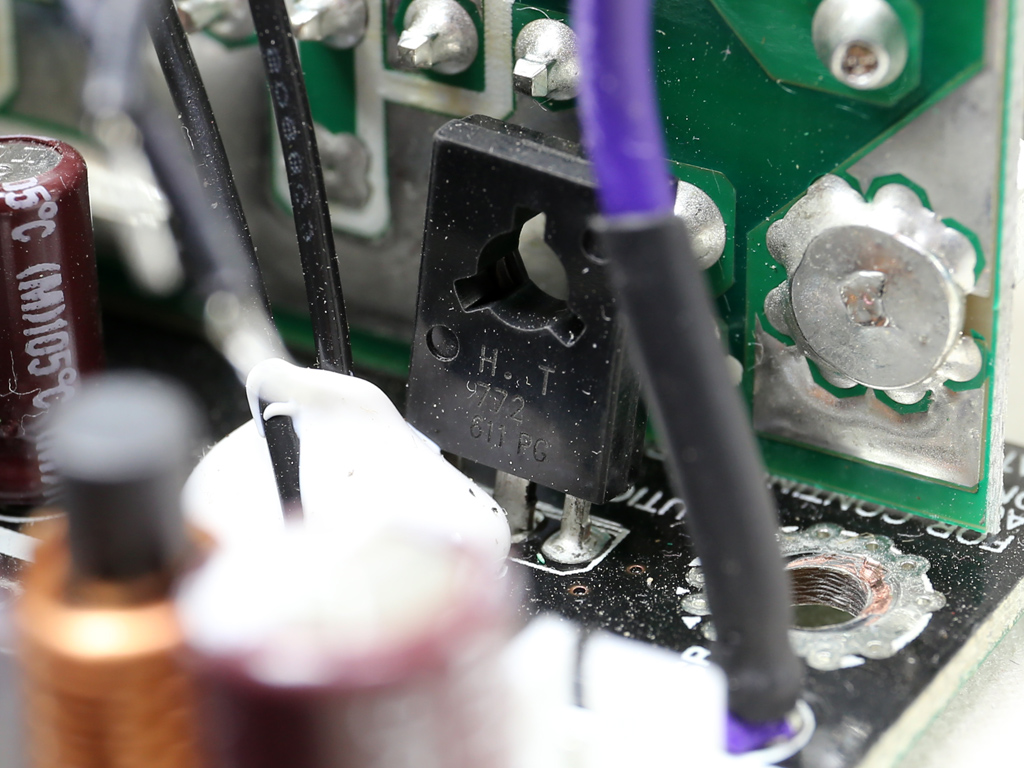
The cooling fan is sourced from PowerYear and its model number is PY-12015H12S. This is a low-speed fan that works with SilverStone's semi-passive feature and a conservative profile to keep noise at fairly quiet levels. Our objection is the use of a sleeve bearing instead of double ball-bearings or an FDB one. Given the SX700-LPT's price tag, we expected to find a higher-quality cooler. But it seems Sirfa decided to save some money by compromising the fan's quality. Remember, after performance, you're looking for two things from a quality PSU: a reliable fan and good filtering caps. If either fails, then the whole PSU will surely follow.
Current page: A Look Inside And Component Analysis
Prev Page Packaging, Contents, Exterior, And Cabling Next Page Load Regulation, Hold-Up Time, And Inrush Current
Aris Mpitziopoulos is a contributing editor at Tom's Hardware, covering PSUs.
-
powernod Purely disappointing!!.Reply
A permanent flaw (false power-good signal), combined with a periodical flaw (far out of specs ripple if this unit gets overloaded), are more than enough evidence in order for me to conclude that this PSU is a potential danger for the rest of the hardware!!.
Once more, thanks for the great review Aris! -
basroil I looked at the internals first, and from that assumed this thing would be an utter mess. Surprisingly it's only a mess... If it was rated as a 550W unit I would have just said the holdup time was disappointing, but as a 700W rated unit this thing goes in the junk list.Reply
And seriously, what were they thinking with that layout? One short and the thing will definitely fry and take down your circuit breaker with it. Considering the number of missed surface mount solder points, shorts are going to be likely.
